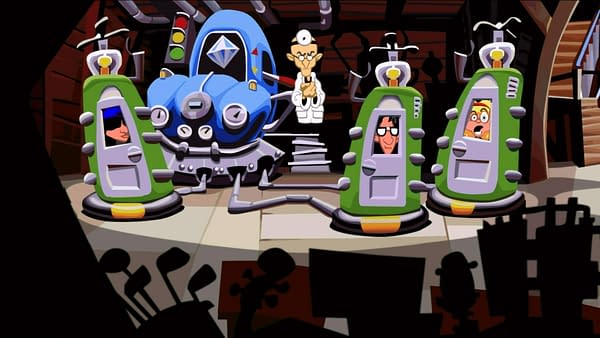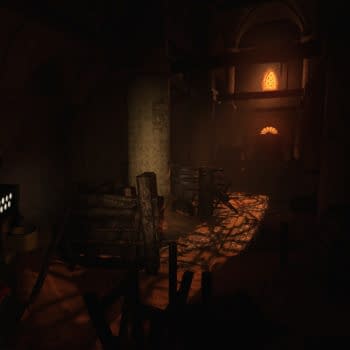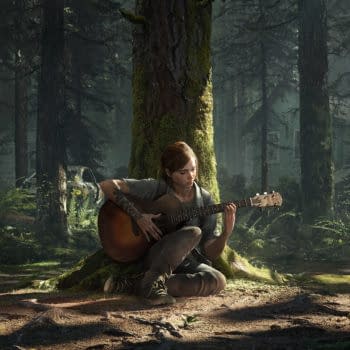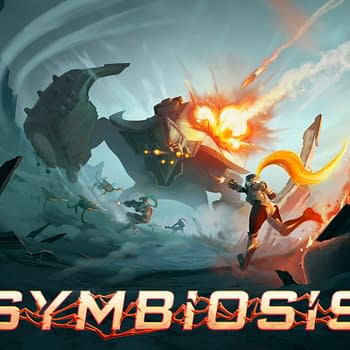Posted in: Games, Video Games | Tagged: Day of the Tentacle, Loom, lucasarts, Maniac Mansion
The Legend of LucasArts and Its Storied Games – Part One

Star Wars isn't the only thing we should be thankful to the Lucas family of companies for.
Full Throttle. Day of the Tentacle. The Secret of Monkey Island. Grim Fandango. If you've played and enjoyed any of these fantastic games, then you've witnessed the magic of LucasArts, brought to fruition by George Lucas (yes, that George Lucas) in 1982. Though the company saw most of its colossal successes in the mid-'90s, it's been a mainstay in both the eyes of consumers and other prominent figures in the industry.
Miraculously, LucasArts is still alive and well, now thirty years after its inception, as a renowned developer and publisher — an illustrious feat in an age of abrupt restructuring, dissemination, and departures of key company employees. From point-and-click adventure games to best-selling third-person action spectaculars, LucasArts has a varied background when it comes to making gaming history. For 30 years of providing us with memorable characters, oddball stories, and plenty of incidental laughs along the way, we celebrate LucasArts: the games, the legacy, and the facts: it's absolutely remarkable we can celebrate a milestone such as this, and we think many kudos are in order.
Here's part one of the LucasArts saga.
Blazing A Trail, Er, Ball
LucasArts was founded in May 1982, as the brainchild of George Lucas, who then aimed to take Lucasfilm Limited into the future by experimenting with emerging technologies. Thus, a partnership with Atari spawned the very first games to carry the Lucasfilm Games label: Ballblazer and Rescue On Fractalis, both for the Atari 5200.
After enjoying some success with the Atari-published titles (and a becy of other releases afterward) the company shifted focus to the next logical step for the organization: combining with Industrial Light and Magic and Skywalker Sound, to form LucasArts Entertainment Company, or the LucasArts we knw today. After the illustrious name change took place, a very familiar emblem was unveiled. The "Gold Guy" logo, depicting a gold man, arms outstretched, atop the vivid purple LucasArts logo encased in a large "L" shape. Above the man is a curved line resembling eyelashes, or a shimmering sun. Though it's taken many different, revised forms over the years, LucasArts found a mainstay in the "Gold Guy" petroglyph, retaining it until the iconic design was replaced with something a little more "modern." But even as things over the years began to change, the games only got better — especially as the company entered the '90s — the heyday of the adventure game, in many respects.
LucasArts Hits The Road
After enjoying moderate success with the 1986 text adventure Labyrinth, it was time for the developer to try something a little different. With Maniac Mansion in 1987, they hit a home run. The brainchild of Ron Gilbert and Gary Winnick, Maniac Mansion brought with it, along with a colorful cast of characters, the Edison family, strange, disembodied tentacles, and a mad scientist who isn't above abducting people for use in his wacky experiments. This hilarious point-and-click extravaganza all but opened the floodgates for what soon became some of LucasArts' most memorable releases, as well as establishing the SCUMM engine that would lay the groundwork for nearly every subsequent adventure game released afterward. The tongue-in-cheek horror spoof utilized cut scenes (the familiar term we all use and abuse today), a term coined by Ron Gilbert.
Maniac Mansion was ahead of its time in many ways, mostly through reinventing the way players interacted with their on-screen avatars. Freely available command choices were available to apply to inventory items and other characters, and each NPC — no matter how prominent — was outfitted with appropriate animations, actions, and dialogue that seemed "just right." It was a blast to play and paved the way for other, bigger commercial successes, and even a sequel down the road.
Where Maniac Mansion left off, classics like Indiana Jones and the Last Crusade and Loom picked up the slack. Both made significant improvements to their predecessors in terms of aesthetic overhauls and gameplay. The genre was changing, being molded into something distinctly more personable than ever before, and LucasArts was at the forefront of what was, arguably, a renaissance for adventure gamers.
To be continued…













